How to Propagate Bleeding Hearts to Create More Plants
If one bleeding heart is marvelous, a dozen are even better! If you aren’t fabulously wealthy, or you just love a gardening challenge, then learning how to propagate these cottage staples is a nice skill to have in your back pocket.
But I’ll let you in on a little secret: it doesn’t even take that much skill really, and there are several different methods you can use.
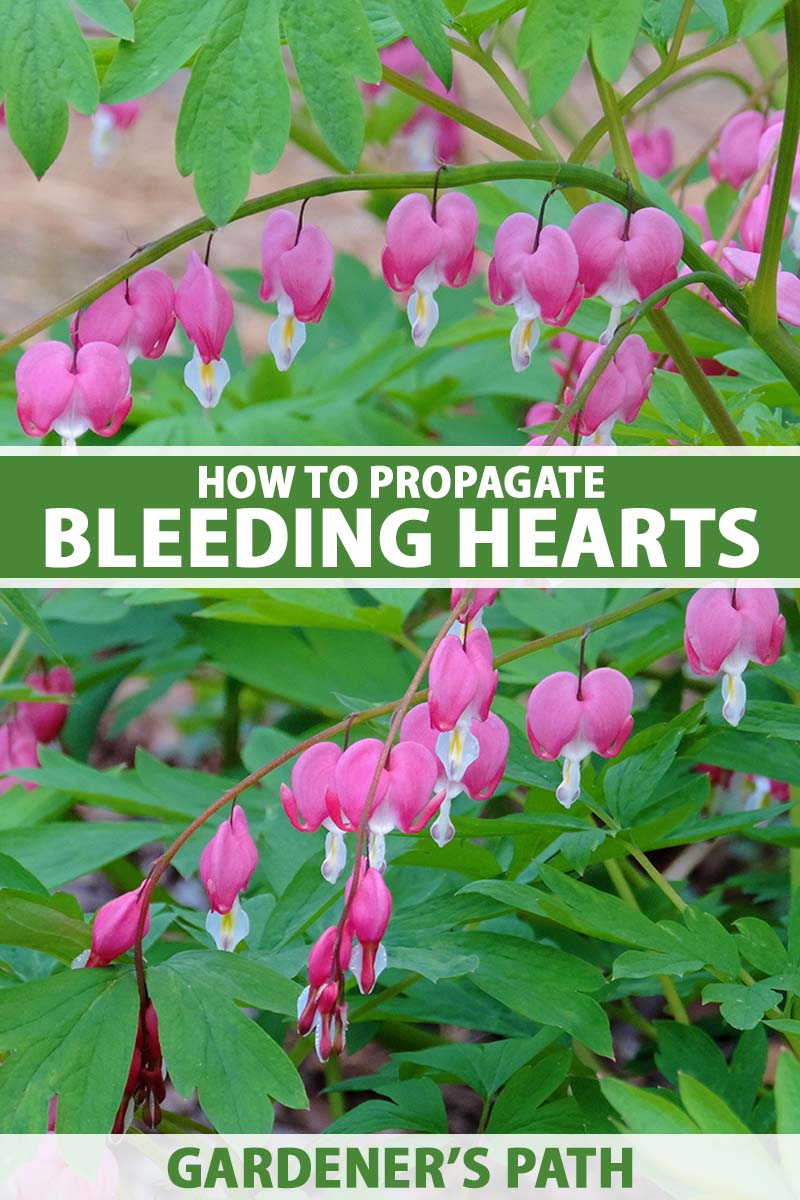

We link to vendors to help you find relevant products. If you buy from one of our links, we may earn a commission.
That’s because bleeding hearts are positively ready and willing to reproduce with minimal effort on your part. Pretty soon, your yard will be overflowing with delicate goodness.
To help you find success with your endeavors, here’s what we’ll discuss:
How to Propagate Bleeding Hearts
If you’re ready for lots of bleeding heart babies – and who wouldn’t be! – let’s jump right in.
When to Propagate
In general, the best time to divide these plants is in the early spring when the green shoots are just starting to emerge from the ground.
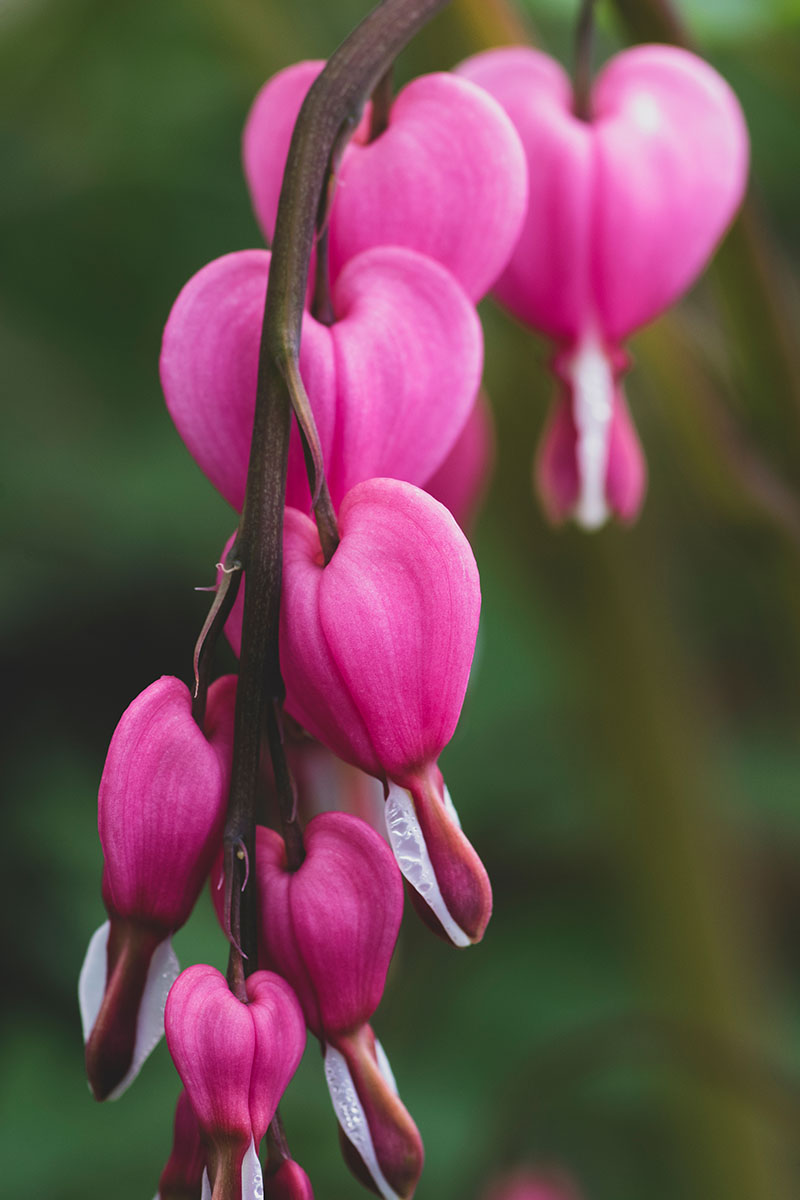

You can also divide them when the stems are turning yellow and dying back in early summer.
It’s also possible to divide this plant in the fall, but finding the roots may pose a challenge as the crown will have died back completely to the soil level at this point.
Cuttings can be taken any time when the crown is visible.
Gathering seeds happens after the pods have ripened, which takes place over a week or two in the summer.
Division
To divide your bleeding heart, use a spade to dig an inch outside of the entire drip line in a circle.
You’ll need to dig as deep as the foliage is tall at its highest point. Then, insert the shovel underneath the root ball and lift it up out of the ground.


Tap or use a gentle stream of water to remove as much of the soil as you can from the root ball.
Then, use a sharp knife to split the crown attached to the root ball into two parts, so you’re dividing the plant in half. You need to have a whole tuber with shoots on each section of the division you’ve made.
Replant the divided sections in prepared soil. Bleeding hearts need rich, loamy, well-draining soil, so make sure that yours is suitable by working lots of well-rotted compost into the soil before planting.
Then, dig a hole three or four times as wide and a few inches deeper than the root section on the division and then refill the base of the hole with soil so that the plant will sit at the same height it was before you dug it up.
Place the division in the soil and fill in around it with soil. Firm up and water.
Root Cuttings
Root cuttings are more reliable than stem cuttings, though both are fairly solid choices for propagation.
If you want, you can take root cuttings while you are also dividing the plant as described above.
Otherwise, dig up the plant, root ball and all, as described above.
Once you have the root ball exposed, tap away or wash away some of the soil with a gentle stream of water. The goal is to expose a section of roots that you can then remove.
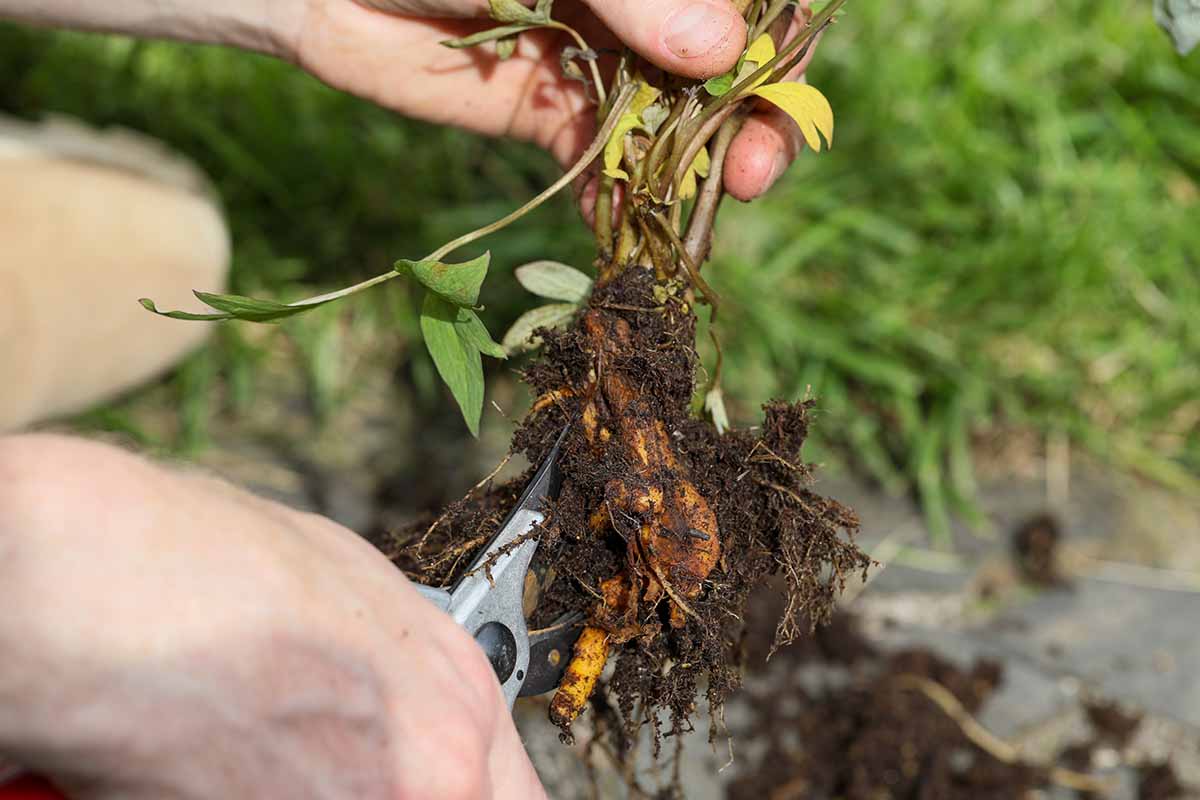

Gently cut away thick root sections. Each piece needs to be about two or three inches long with the diameter of a pencil.
Fill a few three-inch pots with a seed-starting medium. Stick a pencil into the center of each pot to make a hole and place a root cutting in the hole.
Make sure to position the roots in the same direction they were growing in the soil. If you place them upside down, the plant won’t grow.
Cover with about a quarter-inch of soil. Place near a window so each pot receives bright, indirect light. Water the medium so it feels moist but not wet.
You can cover each pot with plastic wrap or a piece of clear glass if you want, to aid in keeping the soil moist. You can also place the pots outdoors in a shady spot.
Keep the soil moist. After about a month, you should see some green growth peeking out of the soil. It might take a few weeks longer, so don’t give up hope, but if there’s nothing happening after eight weeks, it’s time to give up and try again.
Assuming you have success, once the new growth is about six inches tall, you can transplant your cutting into the ground. Or you can leave it in the container and plant it the following year.
For tips on growing a bleeding heart in a container, read our guide. (coming soon!)
Stem Cuttings
Stem cuttings are a little less reliable than root cuttings or divisions, but they don’t take much of the original plant, so there’s no harm in trying, right?
Before you go out and start cutting off stems, prep your planting container first. Fill a three-inch pot with a seed-starting medium and poke a hole in the center with a chopstick or pencil.
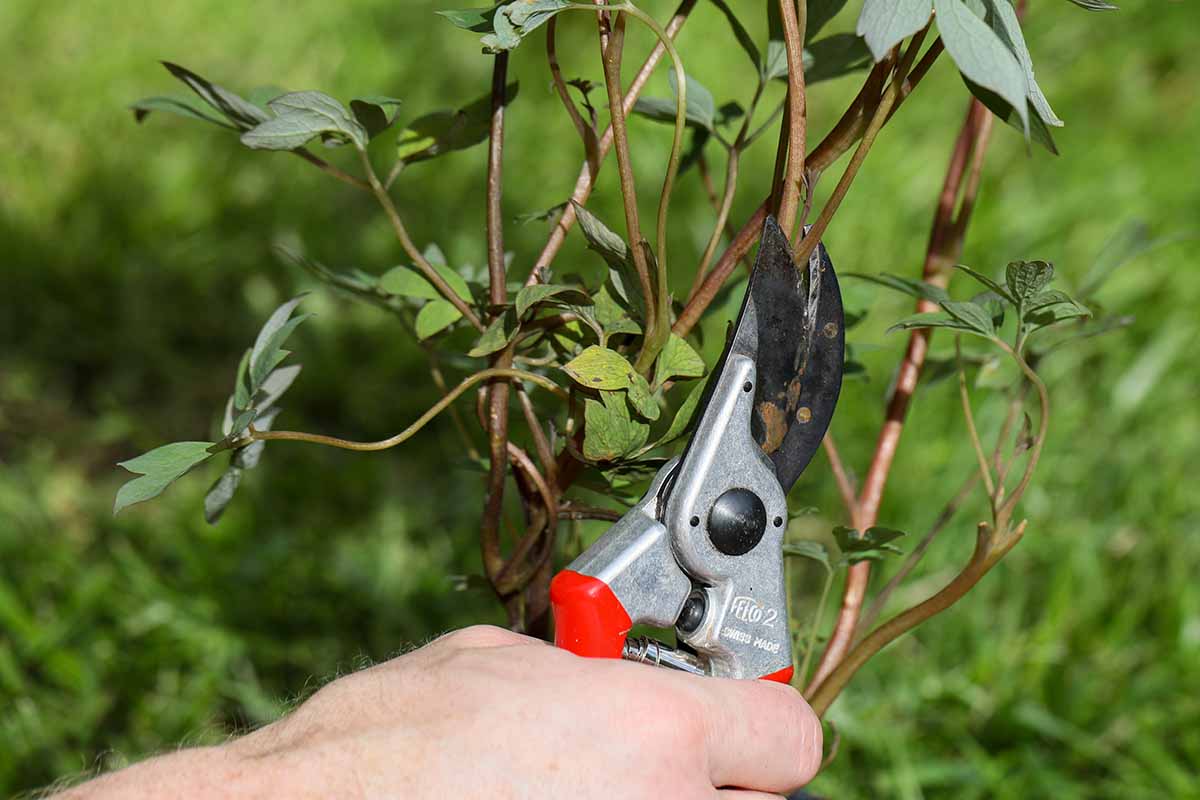

In the morning in early spring, before the flower buds have formed, take a six-inch cutting from the end of a branch.
The thicker the branch, the better. If you aren’t sure what the flower buds look like, they’re faintly colored little balls that form at the end of the branches.
Remove all but three or four leaves towards the tip and stick the cutting in the hole that you made so at least a third of the stem is buried. Firm up the soil around it.
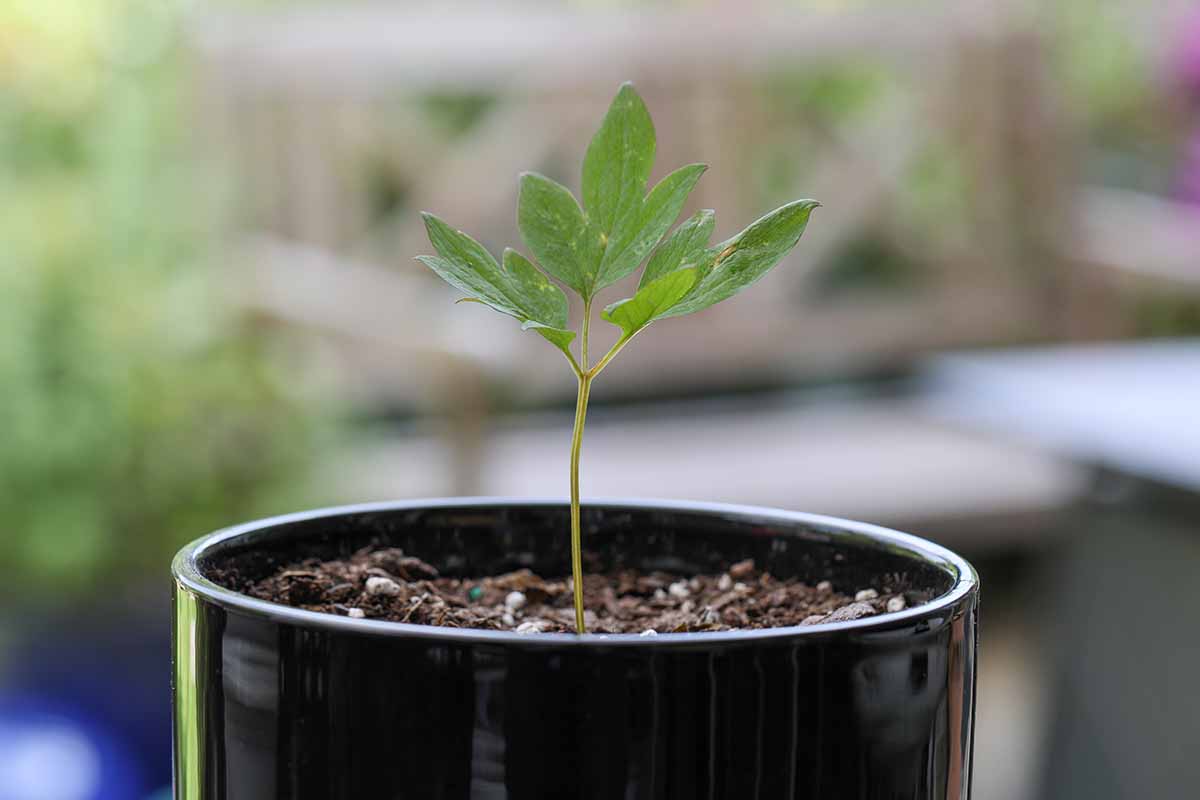

Place a stick that’s longer than the cutting itself an inch or so away from the cutting.
Water the medium well so it feels like a wrung-out sponge and place a plastic bag over the top, with the stick acting as a prop. The bag doesn’t have to be sealed, it just needs to help keep some of that lovely humidity inside.
Keep the soil moist and maybe give the cutting a spritz of water every few days. Keep an eye out for any signs of mold. If you see any black, gray, or white mold forming, remove the plastic.
You can also place the stems in a glass of water to root. Change the water every day.
Once roots have formed, you can harden off and transplant your new friend into its permanent home.
The best way to tell if roots have formed without hurting the plant if it’s growing in soil is to tug the cutting gently. If it resists, and if you see new growth starting, it’s ready.
This process can take up to a month, so be patient and don’t give up.
That is, unless it has been over a month and there’s no sign of anything new happening. Then you might want to toss the cutting out and try again with some fresh soil, or try the water method instead.
Seed
You might have noticed that you don’t have bleeding hearts taking over your garden and that’s partially because the plants don’t self-seed freely.
If you want the seeds to spread around the garden, you need to clip them and scatter them yourself. On top of that, germination rates are low.


That’s bad news if you want to propagate your bleeding heart by sowing seeds that you harvest yourself.
It means it will be a little more difficult for you than it would be with, say, a marigold, which litters its seeds around like confetti and germinates reliably.
You should also keep in mind that some hybrids are sterile, and any seeds from a hybrid that are fertile won’t grow true to the parent plant. But you might end up with something fun, so it’s worth a try.
To harvest the seeds, let the flowers age on the plant. Eventually, in midsummer, they’ll drop and little green pods will form. These pods eventually turn brown and the seeds inside turn black.
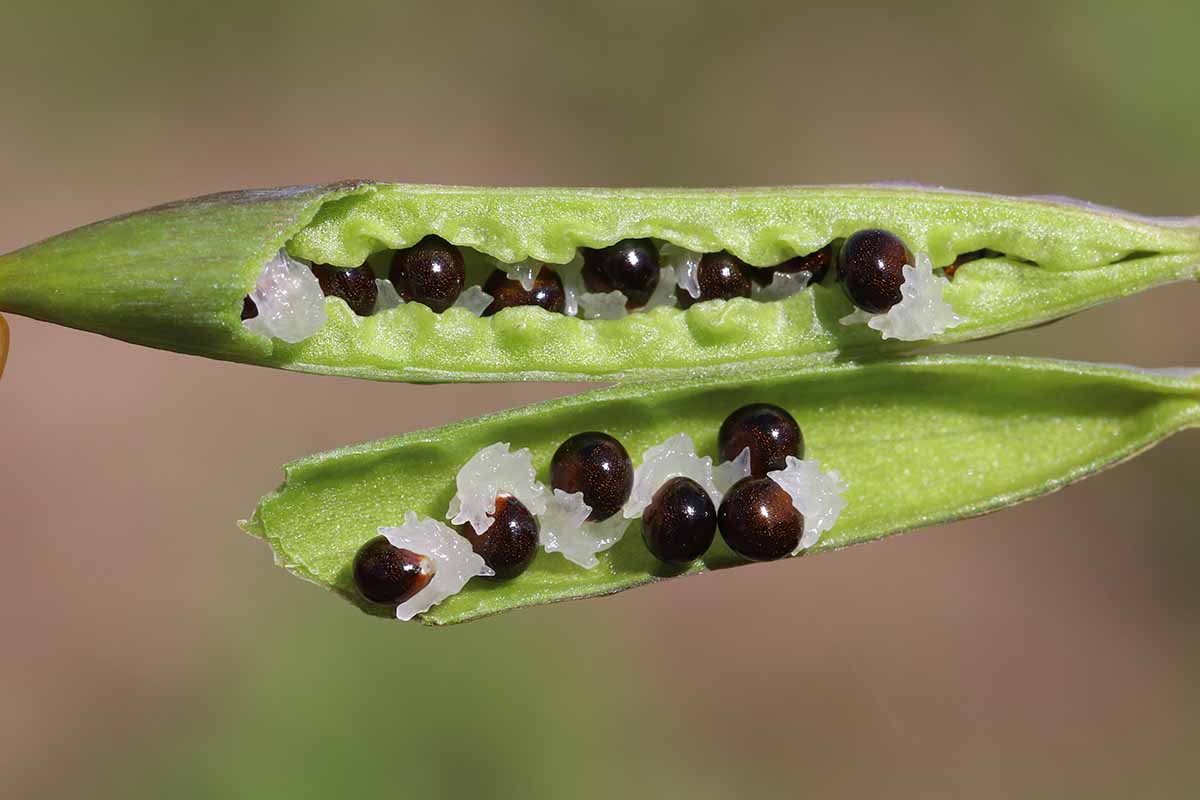

Now they’re ready to harvest. Pluck the pods from the plant and rub them between your hands to release the seeds into a bowl. Blow away the debris and place the seeds in a bag or envelope. Place them in the freezer.
In late winter, remove the seeds from the freezer and store them in a cool, dark place until you’re ready to start growing new seedlings. This should happen about 12 weeks before the last projected frost date in your area.
When you’re ready to plant, fill a seed tray or three-inch container with a seed-starting medium. Sow the seeds a quarter-inch deep and six inches apart if you’re using a tray, or plant them individually in smaller containers.
Water the medium well. Place the containers where they’ll receive bright, indirect light. Keep the soil moist until you start to see new shoots popping up.
Alternately, you can place the seeds in the soil outside in the fall and hope for the best, but the method described above is more reliable.
The More Bleeding Hearts the Merrier
Let’s be honest: you can never have too many bleeding hearts. They’re just so darn cute!
But they aren’t exactly cheap. Figuring out how to make more without having to clear out your local nursery (and wallet) is pretty handy, right?
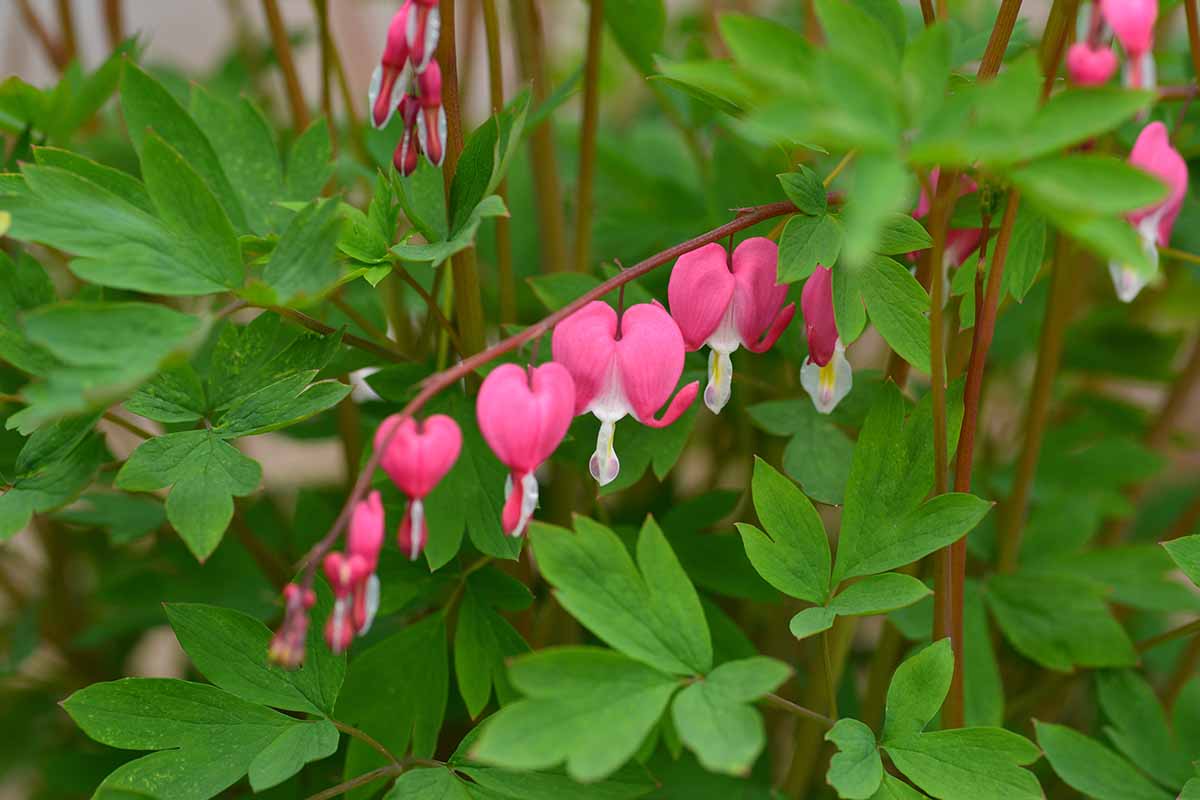

What cultivar are you growing? What method of propagation did you go for? Let us know in the comments section below.
Did this guide help you make lots of happy new bleeding hearts? We hope it did! If so, you might want to continue to expand your bleeding heart knowledge with some of the following guides:
